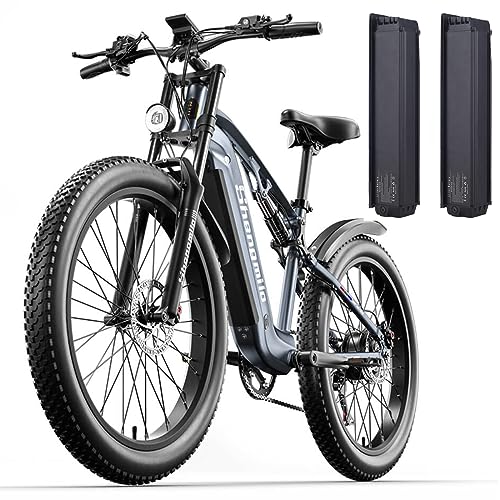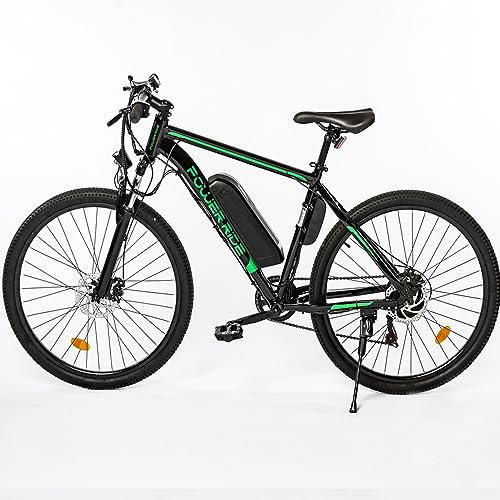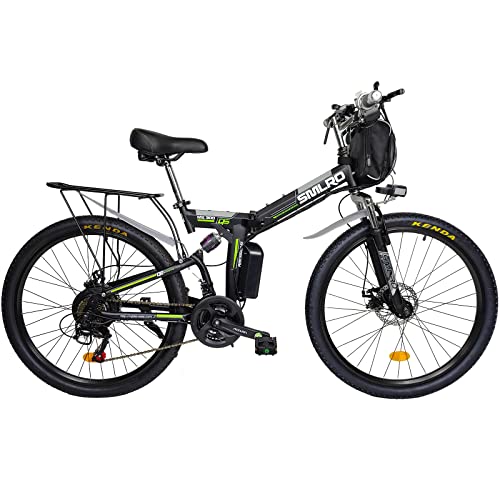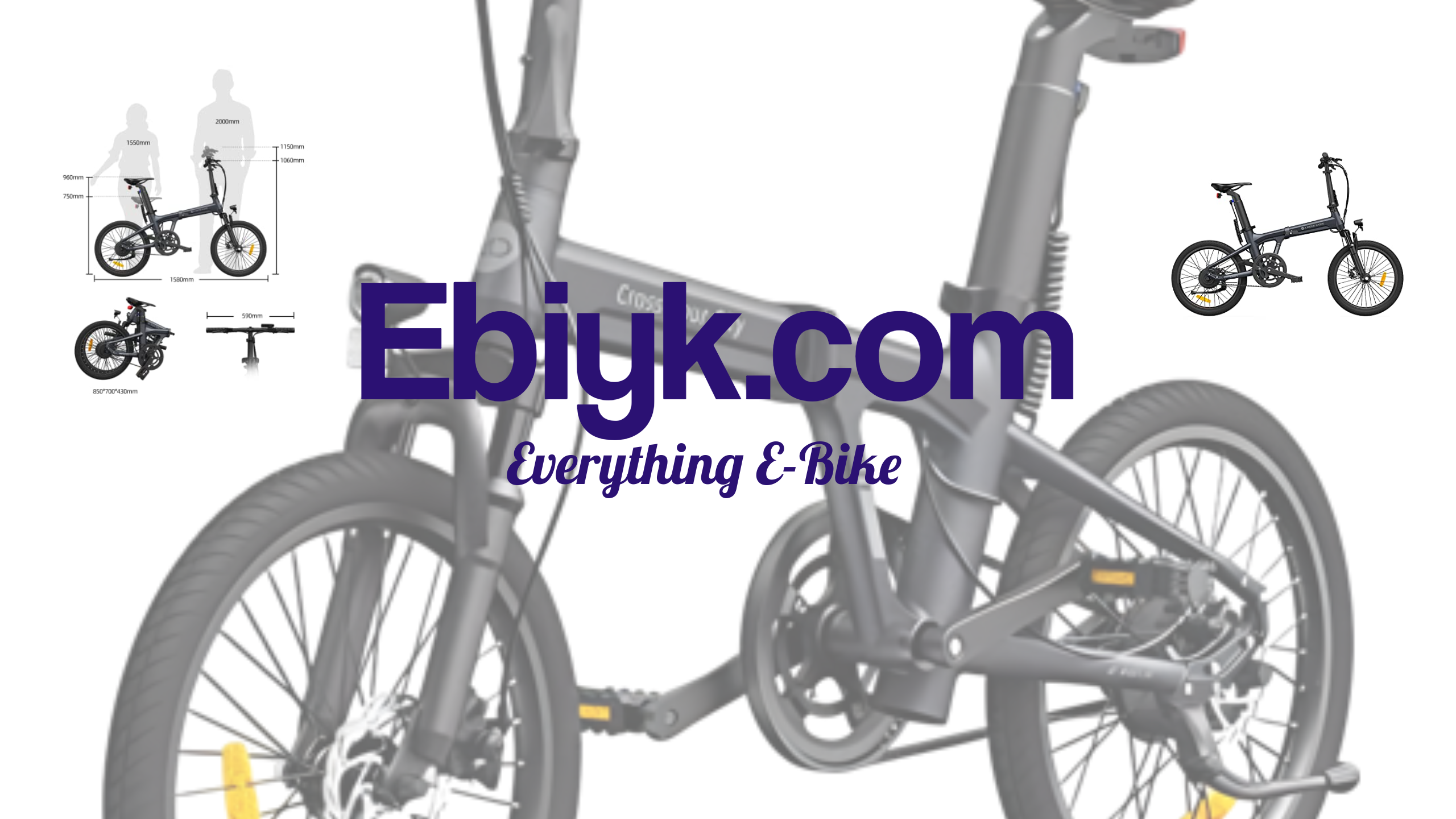Adult Mountain E-Bike with Dual Disc Brakes
Experience the Thrill of Off-Road Adventures with our Adult Mountain E-Bike featuring Dual Disc Brakes"
Product information
$2,103.82
Product Review Score
4.82 out of 5 stars
207 reviewsProduct links
Electronic e-bikes, also known as electric bicycles, are becoming an increasingly popular mode of transportation. This mode of transportation is not only environmentally friendly and cost-effective, but it is also incredibly convenient, especially for commuters. Electronic e-bikes are made up of various components that work together to provide power, speed, and control.
The primary component of an electronic e-bike is the motor. The motor is what provides power to the bicycle, allowing it to operate without requiring physical pedalling effort. The motor can either be located in the front, back, or middle of the bike, depending on the model and make. Some electronic bikes come with a pedal-assist system where the motor is activated only when the rider pedals, while others have a throttle style where the motor is activated with a twist or push of a button.
Another vital component of electronic e-bikes is the battery. The battery provides the power required to run the motor. Most e-bikes come with lithium-ion batteries, which are lightweight and efficient. The battery life of an electronic e-bike varies from model to model and can range from 25 to 75 miles per charge.
The controller is the brain of an electronic e-bike. It regulates the power supplied to the motor, controls the speed, and assists in the management of the battery. The controller system can range from simple switches to more complex LCD screens that allow the rider to select different modes of operation and track their speed and distance.
Finally, the brakes and gears are crucial components of an electronic e-bike. The brakes provide the necessary stopping power, while the gears allow riders to adjust the speed to their preference. Some e-bikes come with automatic gear shifting, while others have manual gear shifting.
In conclusion, electronic e-bikes are made up of different components that work together to provide an effortless, enjoyable, and eco-friendly means of transportation. The motor, battery, controller, brakes, and gears all play vital roles in making these bikes go.
EAGLE Electric Bike with 250W Motor and 27.5" Wheel
Experience the Thrill of Effortless Riding with the Power-Ride EAGLE Electric Bike and its Advanced Features
Product information
$1,184.12
Product Review Score
4.95 out of 5 stars
72 reviews
Product links
EAGLE Electric Bike with 250W Motor and 27.5" Wheel
Experience the Thrill of Effortless Riding with the Power-Ride EAGLE Electric Bike and its Advanced Features
Product information
$1,184.12
Product Review Score
4.95 out of 5 stars
72 reviewsProduct links
The Key Components of Electronic E-Bikes: A Breakdown
Electronic e-bikes have been gaining popularity over the years, and for good reason. These bikes are a sustainable alternative to traditional modes of transportation and can help reduce our carbon footprint. However, not many people know how these bikes are made and what their key components are. In this article, we’ll be breaking down the key components of electronic e-bikes.
The battery is one of the most important components of an electronic e-bike. It powers the motor that propels the bike forward. Typically, e-bikes use lithium-ion batteries, which are lightweight and have a high energy density. The battery’s capacity is measured in watt-hours (Wh), and the higher the watt-hours, the longer the battery will last.
Controller
The controller is responsible for managing the flow of electricity between the battery, motor, and other electrical components. It ensures that the motor receives the right amount of power and that the bike operates efficiently. Without a controller, the bike would not function properly.
Motor
The motor is what sets e-bikes apart from traditional bicycles. It’s what provides electric assistance when pedalling, making it easier to climb hills and ride longer distances. E-bikes can have either hub motors, mid-drive motors, or a combination of both. Hub motors are located in the wheel hub and provide direct power to the wheel, while mid-drive motors are located in the bike’s bottom bracket and use the bike’s gears to provide more torque and efficiency.
Sensors
E-bikes also have sensors that detect the rider’s speed and cadence (pedalling rate). These sensors then communicate with the controller, which adjusts the motor’s power output accordingly. Some e-bikes also have additional sensors, such as torque sensors, which measure the amount of force the rider is applying to the pedals and adjust the motor’s power output accordingly.
Display
Lastly, e-bikes have displays that show the rider important information, such as speed, distance travelled, battery level, and assist level. They can also have additional features, such as GPS navigation, Bluetooth connectivity, and even a USB port for charging devices.
In conclusion, electronic e-bikes are made up of several key components that work together to provide a sustainable and efficient mode of transportation. Understanding these components can help riders choose the right bike for their needs and ensure that it operates properly for many years to come.
The Future of Electronic e-bikes: Developing Innovative Materials and Technologies.
As e-bikes continue to gain popularity around the world as an eco-friendly and efficient mode of transportation, researchers and manufacturers are continually developing new materials and technologies to improve the performance and sustainability of these vehicles.
One area of focus is the development of lightweight and durable materials for e-bike frames and components. Carbon fibre composites are already commonly used in high-end e-bikes because of their strength and low weight, but researchers are now exploring even lighter and stronger materials such as graphene and nanotubes.
Another area of innovation is the integration of sensors and smart technology into e-bikes. Some bicycles already feature sensors that adjust the level of electric assist based on the rider's pedalling speed and effort. But in the future, e-bikes could be equipped with advanced sensors and systems that optimize performance based on terrain, weather conditions, and even the rider's biometric data.
The development of more efficient and sustainable batteries is also crucial to the continued growth of the e-bike industry. Lithium-ion batteries are currently the most common type used in e-bikes because of their high energy density, but researchers are exploring alternative battery chemistries and materials that could provide even greater energy storage capacity while reducing environmental impact.
In addition to improving the technical aspects of e-bikes, researchers are also looking to make the manufacturing process more sustainable. This includes the use of recycled materials and reducing waste during production and assembly.
Overall, the future of electronic e-bikes looks promising as advancements in materials and technology continue to improve the performance, sustainability, and accessibility of these vehicles. As the demand for eco-friendly transportation options grows, e-bikes are likely to play an increasingly important role in urban mobility.
Hyuhome Folding Electric Bike, 26" MTB Dirtbike
Boost Your Commute and Adventure with a Foldable Electric Mountain Bike
Product information
Product Review Score
4.91 out of 5 stars
160 reviews


